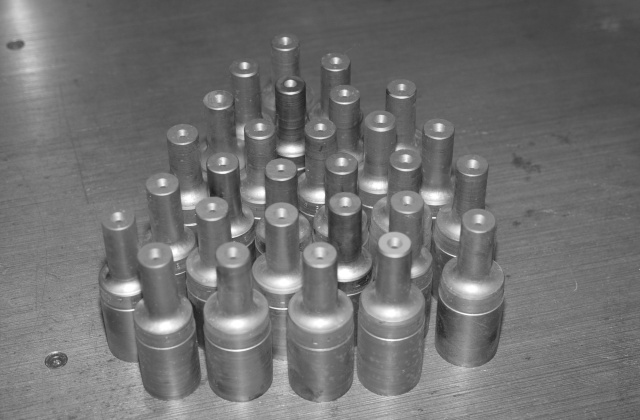LAN71 Powder Metal PM-T15 HSS Mitre Cutters. The question of what rpm range is suitable for tube mitreing has come up several times. The answer has several parts - machine rigidity, flood coolant or not, proper feed rate, cutter diameter, tube material hardness, tube gauge, etc., are some of the factors. One place to start to determine a good rpm is to use a surface feet per minute table for drilling - this seems to be conservative even though the chip flow created by a drill bit is not the same as that from a tube mitre cutter. To simplify, let's assume a small mill is used without flood coolant, hand feeding, 1-1/8" (28.6mm.) cutter, 4130 material with a Brinell hardness of 179 and a 0.9mm. wall thickness. Published tables of surface feet per minute (SFM equals the cutter circumference times RPM) for drill bits show a range from 60 to 90 feet/min for material with a Brinell hardness under 200 which 4130 satisfies. RPM equals 3.814 times the SFM divided by the cutter diameter in inches, which for a 1-1/8" cutter gives a range from 200 to 300 rpm. If the material is heat treated and has a Rockwell (RC) hardness number between 35 and 40, the resulting rpm drops to between 100 to 135 rpm. With a little trial a good speed with the parameters unique to the condition will be found.

